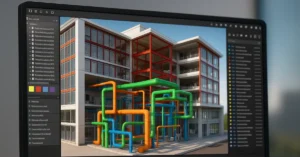Architecture has long been associated with innovation, creativity, and pushing the boundaries of what is possible. Yet, in recent years, there has been a growing movement towards an unlikely concept: adaptive reuse. Rather than tearing down old buildings and starting anew, architects and designers are now looking to repurpose existing structures. This practice is gaining traction for its many benefits, both for the environment and for our communities. In this blog post, we will explore the advantages of adaptive reuse in architecture, and why this trend is set to shape the future of our cities.

What is adaptive reuse in architecture?
Before we delve into the benefits, it is worth clarifying what we mean by adaptive reuse in architecture. Essentially, it is the process of repurposing existing buildings for a new use, rather than demolishing them and starting from scratch. This could involve transforming an old warehouse into apartments, turning a disused church into a community center, or converting a factory into office space. In all cases, the goal is to give new life to an existing structure, rather than wasting resources and creating more waste by building something new.
Benefits of adaptive reuse in Architecture
1. Sustainability
Perhaps the most significant benefit of adaptive reuse is its positive impact on the environment. Demolishing buildings is a major source of waste and carbon emissions, as it requires the transportation and disposal of materials. By contrast, adaptive reuse reduces waste, saves energy, and conserves resources. It also helps to prevent urban sprawl, as repurposing existing buildings means we can make better use of the space we already have, rather than building on greenfield sites.
2. Cost-effectiveness
Adaptive reuse can also be a cost-effective solution for developers and building owners. Repurposing an existing structure is often less expensive than building from scratch, as the shell of the building is already in place. Additionally, repurposing a building can be a smart financial decision for businesses, as it can help to lower overhead costs and provide a unique, characterful space that sets them apart from competitors.
3. Historical preservation
Many old buildings have cultural and historical significance, and tearing them down can mean losing a piece of our heritage. Adaptive reuse allows us to preserve these buildings for future generations, while still finding a practical use for them. It also helps to maintain the character and charm of our cities, rather than replacing them with sterile, modern structures.
4. Flexibility and creativity
Repurposing an existing building requires a certain level of flexibility and creativity from architects and designers. Rather than starting with a blank slate, they must work within the constraints of an existing structure. This can lead to innovative and unexpected design solutions, as well as buildings that are uniquely adapted to their surroundings.
Examples of successful adaptive reuse
There are countless examples of successful adaptive reuse projects all around the world. Here are just a few:
- The High Line in New York City, which transformed an old elevated railway into a beautiful public park.
- The Tate Modern in London, which repurposed an old power station to create one of the world’s most famous art galleries.
- The Centre Pompidou in Paris, which turned an old market into a vibrant cultural center.
- The Brewhouse in Manchester, UK, which transformed an old brewery into a creative hub for artists and designers.
Conclusion
Adaptive reuse in architecture is not just a passing trend; it is the future of sustainable, cost-effective, and creative building design. As we become increasingly aware of the need to reduce waste and carbon emissions, repurposing existing structures is a smart and responsible solution. Furthermore, adaptive reuse allows us to preserve our cultural heritage and create unique, characterful spaces that add to the vibrancy of our cities. While it requires a certain level of creativity and flexibility, the benefits of adaptive reuse in architecture make it a worthwhile pursuit for architects, developers, and building owners alike.
In summary, the benefits of adaptive reuse in architecture include sustainability, cost-effectiveness, historical preservation, and creativity. Examples of successful adaptive reuse projects around the world showcase the potential of this approach, from transforming old power stations into art galleries to repurposing warehouses as homes. As we look to the future, it is clear that adaptive reuse will play an increasingly important role in shaping our cities and our built environment.










